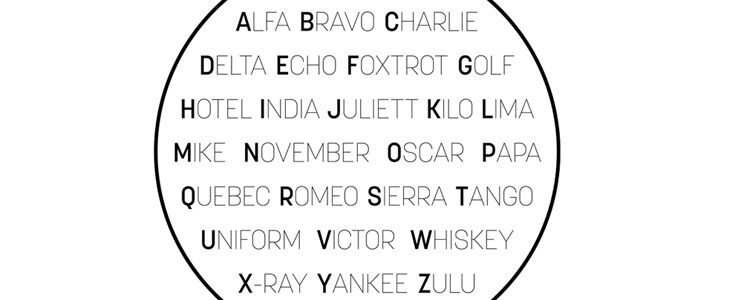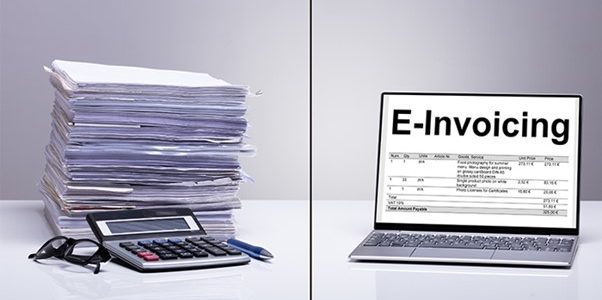
What is the NATO phonetic alphabet?
It’s quite likely that you use the NATO phonetic alphabet without really thinking about it. There are 26 code words in the NATO alphabet, with one assigned to each letter of the English alphabet.
The aim of the alphabet is to prevent miscommunication by spelling out difficult words, using the phonetic alphabet, when speaking over the telephone. This is especially useful if the phone line is bad, or if you’re in a noisy environment where it’s hard to hear what the other person is saying.
This alphabet is used almost everywhere in the English-speaking world when clear audio communication is of the highest importance. This includes the emergency services, military forces and disaster response teams, all of whom can spell out critical information that may otherwise be misunderstood.
Who created the NATO phonetic alphabet?
The International Telecommunications Union invented the first phonetic alphabet in the 1920s, according to NATO. It used geographical place names to represent each letter of the alphabet, such as Amsterdam, Baltimore, Casablanca and Denmark.
The US Army and Navy created the Able Baker alphabet in 1942, during World War II, using shorter everyday words and names. This made it easier and faster to spell out words. This phonetic alphabet was adopted by the UK forces too. The new words of one or two syllables included Able, Baker, Charlie, Dog, Easy and Fox.
In 1952, the International Air Transport Association revised this alphabet again. Although it was still basically English, the organisation gave it a more international flavour. The alphabet incorporated sounds common in English, Spanish and French such as Alfa, Bravo, Coca, Delta, Echo and Foxtrot.
Four years later, in 1956, NATO allies adopted one phonetic alphabet for all members to use universally. This involved making slight changes to only a few letters from the previous version and is the definitive NATO alphabet still in use today.
When is the NATO alphabet used?
Most people will have heard examples of the NATO alphabet, possibly without even realising it, especially if you’ve watched TV reality shows following the work of the police, fictional drama series such as The Bill, or war films.
You’ll have noticed a crackle coming over someone’s communication radio and a voice cutting through the static, saying, “Alfa Bravo, this is Foxtrot Victor. Are you receiving me? Over.”
These aren’t code names. The characters use the NATO phonetic alphabet to identify themselves. It’s likely they are in a noisy environment, where there’s traffic, or possibly even gunfire and the sound of air raids. Trying to get a clear message through in this environment would be challenging.
Using the phonetic alphabet means there’s a much better chance of receiving a clear and accurate message, in a scenario in which passing on incorrect information could be deadly, such as a warzone.
Why should it be used within business?
While the phonetic alphabet was used initially to assist the military and emergency services, it is used within civilian businesses today, as companies have realised its benefits. It often comes in useful for employees who work in a customer services environment, when they are talking to customers on the phone.
Spelling out names and email addresses over the telephone can be open to miscommunication, which can have serious consequences. The phonetic alphabet is a great tool that allows employees to follow the principle of checking information to make sure it’s correct. This is a fundamental part of great customer service, no matter which sector you work in.
Phonetic alphabet in coworking spaces
While some businesses may feel the phonetic alphabet is too formal, on the contrary, a tool that clarifies communication can be invaluable.
While the vibrant, lively, collaborative atmosphere is a major positive of coworking spaces, if you receive a call at your desk and need to record accurate information, it can help to spell names, email addresses and postcodes correctly if there’s a buzz around you.
It makes it easier to clarify information with customers over the phone. It can also be used when sharing web links or passing on any other information, particularly if there are language or accent barriers.
Apart from the obvious practical benefits, when you use the phonetic alphabet, it shows you know your stuff and pay attention to detail. This improves the customers’ perception of both your own professionalism and your organisation.
If you work in the legal profession, financial services, insurance, or any other industry that has a particularly important requirement for 100% accurate information, checking spellings with the phonetic alphabet could be crucial.
How can you learn the phonetic alphabet?
Unfortunately, there aren’t any commonly used fun training exercises to help you learn, so you’ll need to get creative yourself. First, write down the words and study them, as you would learn spelling at school, until you have a basic understanding.
If you’re training your team, you can begin by asking colleagues to spell their names using the phonetic alphabet. Another training exercise is to spell out simple instructions using the phonetic alphabet and let your team decipher them.
Ask them to spell out other personal information, such as the town where they live, or their most recent holiday destination. You can add quick little tests at training sessions, such as throwing out a number of longer words in the phonetic alphabet and seeing who can shout out the answer quickest.
This alphabet can be used in any sector or workspace where English is spoken and clear communication is of the highest importance, so don’t miss out on this simple yet important tool to aid your business’s success.
© pyty / Adobe Stock


